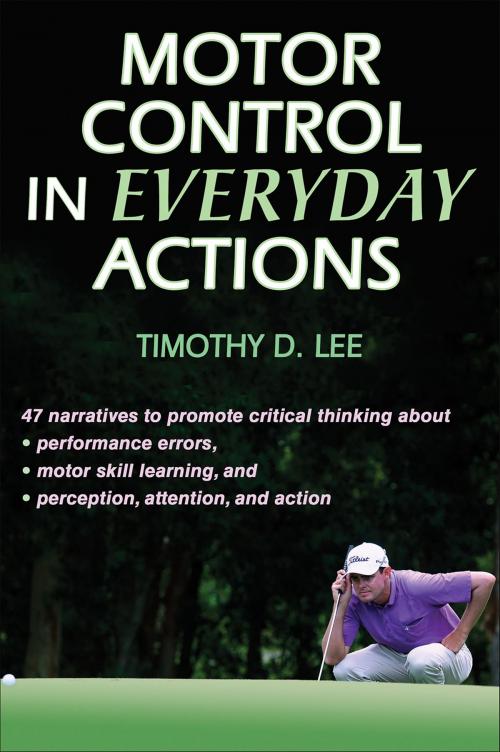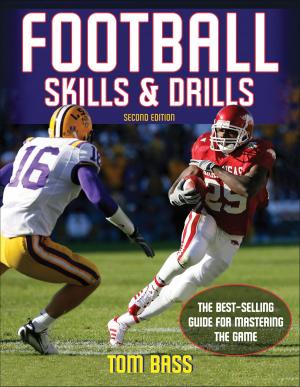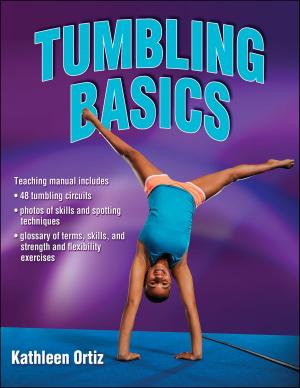Motor Control in Everyday Actions
Nonfiction, Health & Well Being, Medical, Medical Science, Physiology, Psychology, Developmental Psychology| Author: | Timothy D. Lee | ISBN: | 9781492582731 |
| Publisher: | Human Kinetics, Inc. | Publication: | May 5, 2011 |
| Imprint: | Human Kinetics, Inc. | Language: | English |
| Author: | Timothy D. Lee |
| ISBN: | 9781492582731 |
| Publisher: | Human Kinetics, Inc. |
| Publication: | May 5, 2011 |
| Imprint: | Human Kinetics, Inc. |
| Language: | English |
Motor Control in Everyday Actions presents 47 true stories that illustrate the phenomena of motor control, learning, perception, and attention in sport, physical activity, home, and work environments. At times humorous and sometimes sobering, this unique text provides an accessible application-to-research approach to spark critical thinking, class discussion, and new ideas for research. The stories in Motor Control in Everyday Actions illustrate the diversity and complexity of research in perception and action and motor skill acquisition. More than interesting anecdotes, these stories offer concrete examples of how motor behavior, motor control, and perception and action errors affect the lives of both well-known and ordinary individuals in various situations and environments.
Readers will be entertained with real-life stories that illustrate how research in motor control is applicable to real life:
•Choking Under Pressure examines information processing and how it changes under pressure.
•The Gimme Putt shows how Schmidt’s law can be used to predict the accuracy of golf putts.
•Turn Right at the Next Gorilla examines inattention blindness and its role in traffic accidents.
•The Farmers’ Market describes reasons why a man drives his car through a crowded open-air market, killing and injuring dozens of shoppers in the process.
•Craps and Weighted Bats describes the curious role of myths and superstition in how we play games.
•And 42 other examples of motor control in everyday actions will both entertain and inform.
Each story is followed by a set of self-directed activities that are progressively more complex. These activities, plus the additional notes and suggested readings and websites at the conclusion of each story, provide a starting point for critical thinking about the reasons why human actions sometimes go awry. A reader-friendly writing style and easy-to-follow analysis and conclusions assist students in gaining mastery of the issues presented, conceptualizing new research projects, and applying the content to current research.
The stories are grouped into three parts, beginning with situations involving errors and mistakes in perception, action, or decision making. Next, stories investigating varied techniques for studying perception and action are presented. The remaining scenarios provide readers with a look at research focusing on the motor learning process as well as some of the unexpected discoveries resulting from those investigations.
Motor Control in Everyday Actions will engage its readers—not only through the central topic of the story but also in the fundamental concepts involving perception, action, and learning. Used as a springboard for new research or as a catalyst for engaging discussion, Motor Control in Everyday Actions offers perspectives that will enhance understanding of how human beings interact with their world.
Motor Control in Everyday Actions presents 47 true stories that illustrate the phenomena of motor control, learning, perception, and attention in sport, physical activity, home, and work environments. At times humorous and sometimes sobering, this unique text provides an accessible application-to-research approach to spark critical thinking, class discussion, and new ideas for research. The stories in Motor Control in Everyday Actions illustrate the diversity and complexity of research in perception and action and motor skill acquisition. More than interesting anecdotes, these stories offer concrete examples of how motor behavior, motor control, and perception and action errors affect the lives of both well-known and ordinary individuals in various situations and environments.
Readers will be entertained with real-life stories that illustrate how research in motor control is applicable to real life:
•Choking Under Pressure examines information processing and how it changes under pressure.
•The Gimme Putt shows how Schmidt’s law can be used to predict the accuracy of golf putts.
•Turn Right at the Next Gorilla examines inattention blindness and its role in traffic accidents.
•The Farmers’ Market describes reasons why a man drives his car through a crowded open-air market, killing and injuring dozens of shoppers in the process.
•Craps and Weighted Bats describes the curious role of myths and superstition in how we play games.
•And 42 other examples of motor control in everyday actions will both entertain and inform.
Each story is followed by a set of self-directed activities that are progressively more complex. These activities, plus the additional notes and suggested readings and websites at the conclusion of each story, provide a starting point for critical thinking about the reasons why human actions sometimes go awry. A reader-friendly writing style and easy-to-follow analysis and conclusions assist students in gaining mastery of the issues presented, conceptualizing new research projects, and applying the content to current research.
The stories are grouped into three parts, beginning with situations involving errors and mistakes in perception, action, or decision making. Next, stories investigating varied techniques for studying perception and action are presented. The remaining scenarios provide readers with a look at research focusing on the motor learning process as well as some of the unexpected discoveries resulting from those investigations.
Motor Control in Everyday Actions will engage its readers—not only through the central topic of the story but also in the fundamental concepts involving perception, action, and learning. Used as a springboard for new research or as a catalyst for engaging discussion, Motor Control in Everyday Actions offers perspectives that will enhance understanding of how human beings interact with their world.















